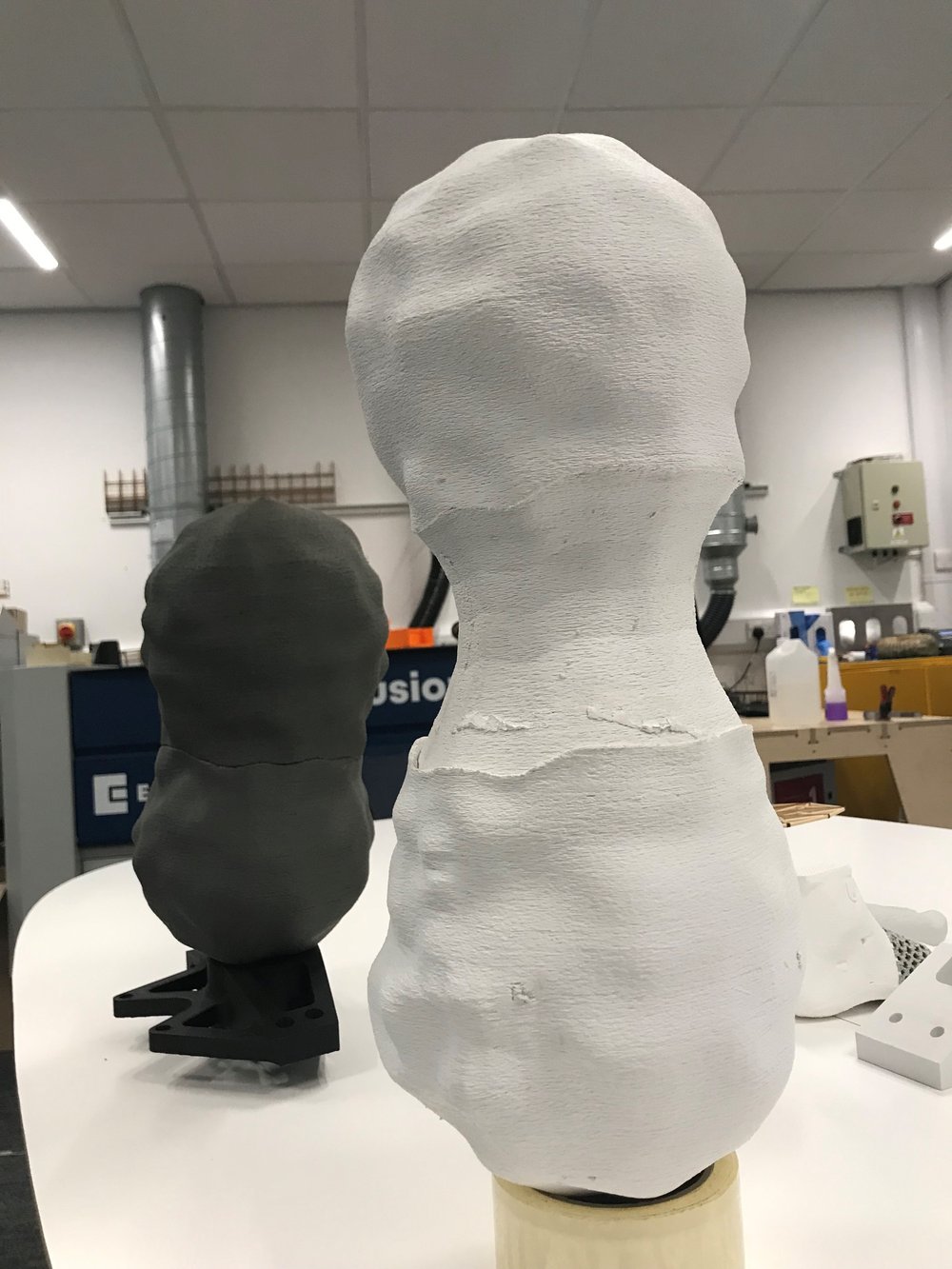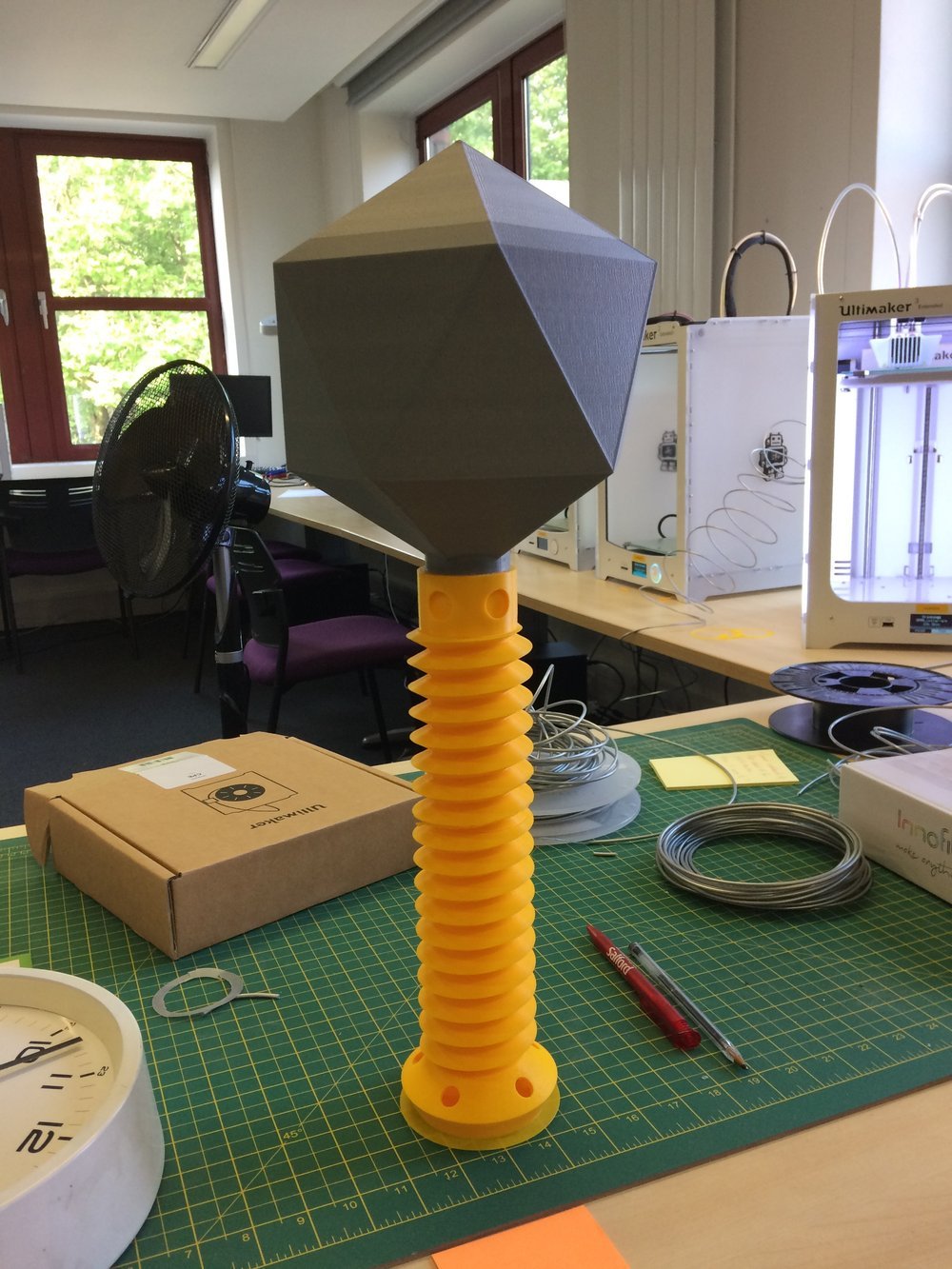Interactive Models
Learning by doing:
Phages have a crucial role to play in the evolution of bacteria and may hold the key to several new strategies for treating bacterial diseases. We wanted to create colourful and tactile objects that could bring the actions of phages to life in a memorable way.
We co-created a set of interactive models of giant bacteria and phage that demonstrate their structure and the importance of phage specificity for different bacteria. To make the models work, the user must find the right phage “key” to fit the right molecule on the bacterial surface that enables infection. This is called the “receptor”.
Only the correct phage-receptor connection will simulate one of two phage actions:
A lytic infection will trigger phage replication inside the bacteria, eventually causing it to burst open, killing the bacteria and releasing newly created phage progeny.
By contrast, a lysogenic infection will enable the phage DNA to incorporate into the DNA of the bacteria, forming a cooperative partnership.













Makers Behind the Curtain:
Our giant microbial models were designed and manufactured in collaboration with Morson Maker Space at The University of Salford. Microbiologist Professor Chloë James approached the Maker Space team with a few rough sketches and a bag full of enthusiasm. The team latched onto the “lock and key” analogy and took inspiration from children’s educational toys that require fitting the right shaped block into the right hole. This would foster active “learning by doing”. They produced a series of prototypes for feedback from the microbiologists who trialled several designs with input from the research groups of Prof Heather Allison and Prof Jo Fothergill at The University of Liverpool:
“We really put the prototypes through their paces during lab meetings and identified some functional glitches. We also used the early models at open day events and workshops to see how different audiences reacted” says Prof Allison
Show and Tell:
The giant bacteria have a colourful 3D-printed shell that is almost a million times bigger than the real thing. Inside a hydraulic mechanism triggers infection events when the right phage “key” is applied. The final working models made their debut at our Microbial Puppet Masters Exhibit at The Royal Society Summer Science Exhibition in July 2022.
“It was great to be part of the team that worked on the Microbial Puppet Masters Exhibit at the Royal Society! The Maker Space team prides itself on supporting our research staff and we understand the importance of helping to showcase and communicate our research excellence to a broad and diverse audience. The project was a brilliant opportunity to work with other universities and be part of a collaborative team. Working on the ground in London and seeing the models in action was a great example of how important it is to have fun, accessible and inclusive science communication. We look forward to doing more work like this in the future!” George Dodgson (Maker).
Aiden demo of flexible phage tail
George testing established prototype models
Co-leads of the project Heather Allison and Chloe James talk more about the models on the red sofa at The Royal Society






